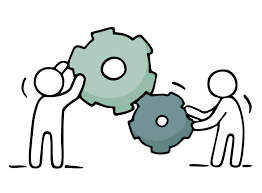Mastering Digital Problem-Solving & Decision-Making: A 15-Step Guide

Updated at: 2025-02-23 16:19:13 (7 months ago by Melkisedeck Leon Shine)
```htmlMastering Problem Solving and Decision Making in the Digital Age
The digital world presents unparalleled challenges and opportunities, demanding sophisticated problem-solving and decision-making skills. In this fast-paced environment, the ability to navigate complexity and make informed choices is no longer a desirable trait; it's a necessity. This article explores fifteen key strategies to excel in this crucial area.
1. Deeply Understand the Problem: Before devising solutions, thoroughly analyze the issue. Clearly define the problem's scope, impact, and underlying causes. A precise understanding forms the foundation of effective problem-solving.
2. Leverage the Power of Information: The digital realm provides instant access to vast amounts of information. Utilize search engines, online databases, and reputable sources to gather relevant data and insights. This thorough research ensures informed decisions.
3. Evaluate Diverse Solutions: Explore multiple solutions, weighing the advantages and disadvantages of each. Consider factors such as feasibility, cost-effectiveness, and potential outcomes. A comprehensive evaluation leads to well-rounded decisions.
4. Harness the Potential of Digital Tools: Employ the array of digital tools available to streamline processes and boost productivity. Project management software, data analytics platforms, and collaboration tools significantly enhance efficiency.
5. Foster Collaboration and Diverse Perspectives: Digital platforms facilitate collaboration with individuals from various backgrounds and expertise levels. Engage in online communities and forums to gather insights and innovative perspectives.
6. Data-Driven Decision Making: The digital world is data-rich. Leverage data analytics tools to extract meaningful insights and make data-driven decisions. This approach increases the accuracy and effectiveness of your problem-solving process.
7. Embrace Creativity and Innovation: Problem-solving and decision-making often require unconventional thinking. Utilize design thinking methodologies, brainstorming sessions, and explore innovative digital solutions to approach challenges from new angles.
8. Master Time Management: The abundance of online information can easily lead to wasted time. Establish clear goals, prioritize tasks effectively, and use digital productivity tools to optimize your time management and enhance focus.
9. Prioritize Ethical Considerations: Always consider the ethical implications of your decisions. The digital world demands responsible behavior. Ensure your choices align with ethical standards and principles, considering potential societal impacts.
10. Cultivate Adaptability: The digital landscape is in constant flux. Remain adaptable by staying abreast of the latest trends, technologies, and best practices. This adaptability enables informed decisions and innovative solutions.
11. Test, Iterate, and Refine: The digital world allows for easy testing and iterative improvement. Use online surveys, A/B testing, and user feedback to refine your solutions. This continuous improvement cycle ensures optimal outcomes.
12. Assess and Mitigate Risks: The digital realm presents unique risks. Incorporate robust risk assessment and mitigation strategies into your decision-making process. Address cybersecurity concerns, data privacy, and potential legal implications proactively.
13. Master Effective Communication: Effective communication is paramount. Utilize digital communication tools—video conferencing, chat platforms, project management software—to foster collaboration and clearly convey your ideas.
14. Reflect and Learn from Experiences: After implementing a solution, reflect on the process and outcomes. Analyze what worked well and identify areas for improvement. This reflective practice refines your skills over time.
15. Seek Feedback and Continuous Learning: Actively solicit feedback from colleagues, mentors, and online communities. Their perspectives offer valuable insights and contribute to your growth as a problem-solver and decision-maker.
In conclusion, effective problem-solving and decision-making in the digital age require a blend of analytical skills, creativity, adaptability, and a strong ethical compass. By leveraging digital tools, collaborating effectively, and embracing continuous learning, you can confidently navigate the complexities of the digital landscape. Share your thoughts and experiences below – how do you approach problem-solving and decision-making in the digital world?
```


